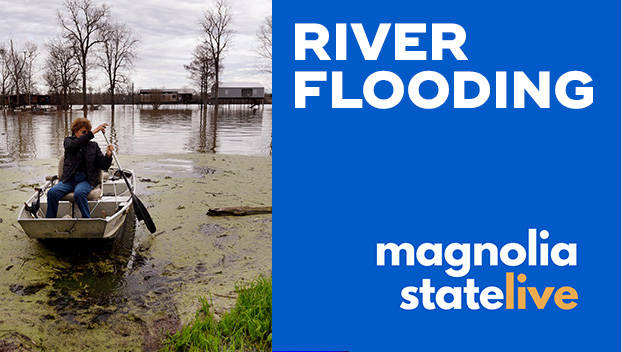Still high Mississippi River has New Orleans nervous as hurricane season hits traditional peak
Published 11:40 am Wednesday, August 14, 2019
A Category 4 hurricane striking the Louisiana coastline can produce a 20-foot (6.1-meter) storm surge , the National Oceanic and Atmospheric Administration says. However, that surge’s size at New Orleans, more than 100 winding river miles up from the coast, would be reduced by the Big Muddy’s push seaward.
The levees range in height from 20 to 25 feet (6 to 7.5 meters). While river levels are finally falling, the National Weather Service projects the Mississippi will remain above average at New Orleans as hurricane season heats up.
“We really have a heightened concern this year,” said Scott Hagen, of Louisiana State University’s Center for Coastal Resiliency.
For most of the past three decades, the Mississippi has run about 3 to 5 feet (1 to 1.5 meters) high in mid-August at New Orleans’ Carrollton gauge. The last time it was this high was 11.4 feet (3.5 meters) in August 2015, a year when no significant tropical weather reached Louisiana’s coast. It was 12.2 feet in 1993, another year Louisiana’s coast escaped harm.
When Katrina formed as a tropical storm in the Bahamas on Aug. 24, 2005, the river stage in New Orleans was just 2.44 feet (0.74 meters) above sea level. It rose to 3.6 feet (1.1 meters) the day before Katrina devastated the city in 2005.
Katrina knocked out an automatic station that would have measured peak surge at the river’s mouth, but an analysis by the Federal Emergency Management Agency indicates the surge reached nearly 28 feet at Pass Christian, Mississippi. Surge pushed the Mississippi River up to 11.6 feet (3.5 meters) at New Orleans — not a threatening height with the river low. But surge from the brackish lakes to the city’s north and east reached 19 feet, overtopping or breaching those levees and flooding 80 percent of the city with water as much as 20 feet deep in places.
“I would assume major problems on the river if we had a high river with a Katrina event,” said Jeffrey Graschel, with the National Weather Service’s Lower Mississippi River Forecast Center.
The vast majority of the $14.6 billion spent on flood controls as a result of Katrina went not to the river levees, but to shore up and block areas that failed.






